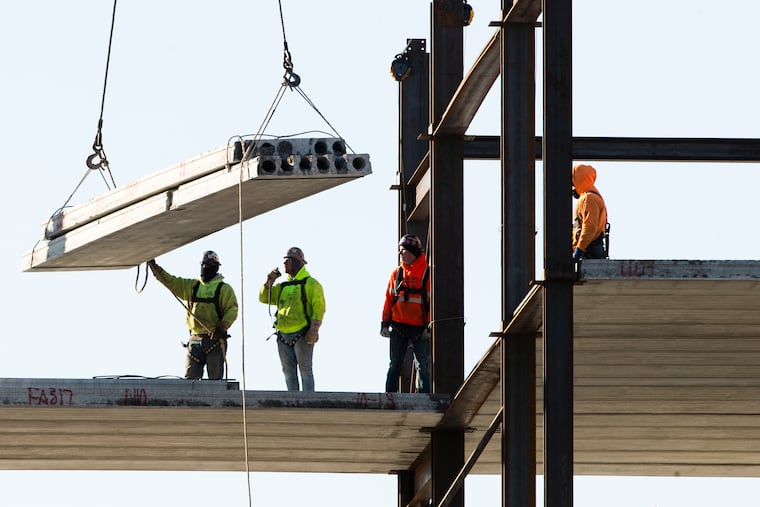How racial segregation holds back the economy
The more racially integrated our communities, the stronger our economy.

The pandemic has underscored the nation’s long-standing racial divides. Black and Hispanic Americans suffered greater financial losses because so many worked in industries severely disrupted by the virus. They’ve been more likely to get sick and go to the hospital largely because they don’t have the luxury of working from home.
The pandemic has also exposed economic and social differences that will remain long after the virus recedes. These divisions have ignited civil strife and raised social and moral concerns, but they also raise economic ones. The more racially fractured our society, the weaker our economy.
This is not just intuitive; it is measurable. We can see it by estimating the relationship between real GDP, the value of the goods and services produced by the economy, and racial integration in communities across the country, measured by the extent that communities are defined by racial enclaves. Based on this relationship in the decade before the pandemic, the more racially integrated our communities, the stronger our economy. That is, GDP grows, families have more income, and house prices are higher, so families are wealthier.
There are highly segregated communities in all parts of the country, but they tend to be in the big cities in the Northeast and Midwest. The cities of Detroit, Newark, N.J., Chicago, New York, Philadelphia, and Milwaukee stand out. Highly integrated communities are also found across the country, particularly in the Southwest and Northwest, but also in some of the suburbs of those big Northeastern cities. Not all racially integrated communities have dynamic economies, and not all segregated communities have troubled economies, but it is clear that communities are economically healthier the more integrated they are.
» READ MORE: Philly is one of the most racially segregated cities in America. We measured it.
In fact, less-integrated communities experience weaker economic growth regardless of whether they are predominately white or nonwhite. Determining why this relationship holds is difficult, but several intuitive reasons likely dominate.
Workers in more integrated communities generally enjoy shorter commutes to work. Someone spending less time getting to work has more time for their employer and for themselves.
Credit is more widely available in these communities, and with greater access to capital comes greater growth for small businesses and greater wealth-building through homeownership. Black and Hispanic families are less likely than white families to even have a credit score, since they have been less able to get credit. And of course, getting credit is close to impossible without a score. This is a baneful catch-22.
More segregated communities tend to have higher crime rates, which act like a tax on businesses and households, diminishing the communities’ attraction as places to live and work and, with it, business activity. Higher incarceration rates also result in lower labor force participation and earnings potential for those who have been in jail.
Business activity has become steadily more concentrated in fewer large companies, especially in racially integrated communities. Segregated communities result in smaller, more-fragmented niche markets that are less attractive to large, highly productive, multinational companies looking to operate in big, more-homogenous markets.
Whatever is driving the relationship between racial integration and economic growth, it is not simply an academic statistical result that if addressed would eventually mean just a few extra dollars for American families. If communities across the country were to more fully integrate, so that the nation as a whole was as integrated as its most integrated communities, long-term real GDP growth would accelerate by about three-tenths of a percentage point every year. This may not sound like much, but within a decade it would translate to the current GDP of Switzerland or the state of Pennsylvania. Over a generation or two, this would be an economic game changer.
This is, of course, easier said than done. Racial segregation has been with us since the founding of the nation, and the slow pace of change despite compelling economic incentives suggests just how deep-seated the impediments are. Unwinding entrenched racial inequities is unlikely without a concerted effort by policymakers. This means making the economic incentives to racially integrate more convincing and lifting up families of color who have been financially downtrodden by segregation.
We should be under no illusion about the stakes. If the nation is unable to rise to the challenge, the economic consequences are significant. After all, the very communities that have been isolated through segregation, and as a consequence miss out on the economic opportunity afforded the rest of us, are slowly but surely becoming the majority. If we cannot find a way to integrate them into the economic promise of this country, the promise itself will fade for all of us.